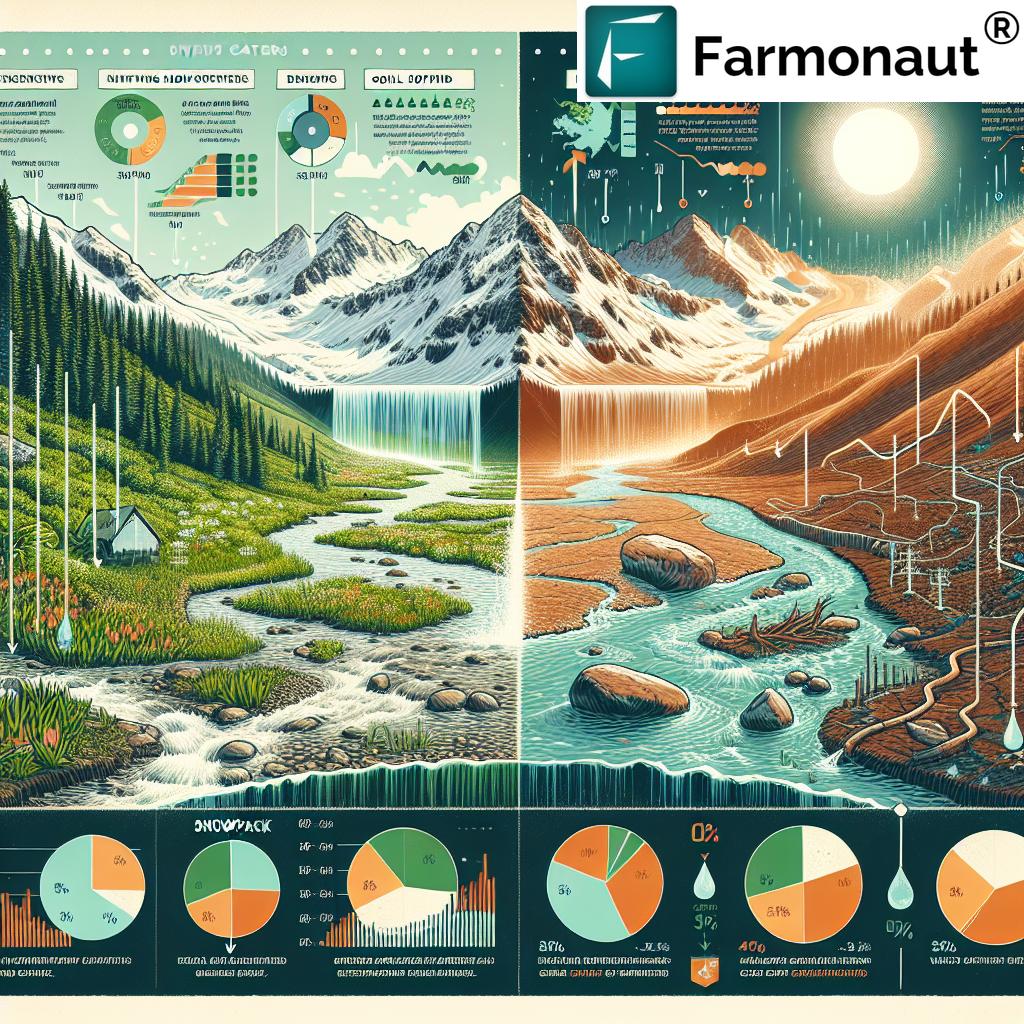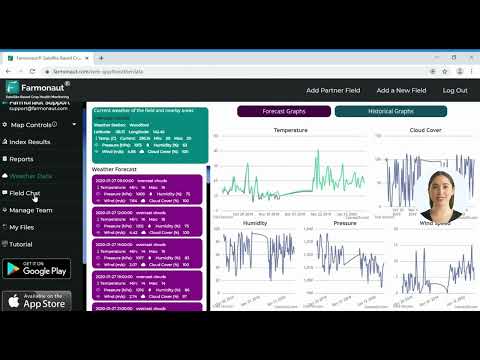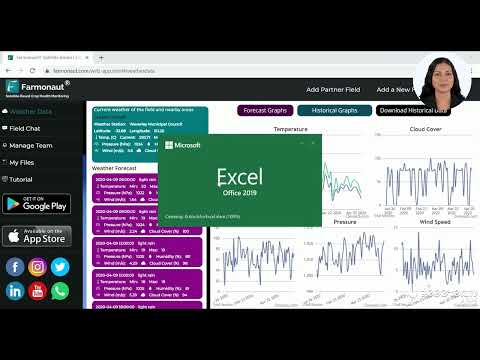Utah’s Water Outlook: Snowpack Boost Meets Drought Challenges – Spring Runoff Forecast and Conservation Strategies
“Utah’s snowpack reached 93% of median average, yet most basins anticipate below-normal spring runoff.”
As we delve into Utah’s complex water situation, we find ourselves at a critical juncture where recent snowpack improvements collide with persistent drought challenges. In this comprehensive analysis, we’ll explore the intricacies of Utah’s water outlook, examining the latest snowpack conditions, spring runoff forecasts, and the conservation strategies being implemented across the state.
Current Snowpack Conditions in Utah
The latest reports from Salt Lake City bring a mix of optimism and concern regarding Utah’s snowpack conditions. While recent storms have boosted the statewide snowpack to 93% of the median average for this time of year, the situation remains far from ideal. Let’s break down the current state of affairs:
- Regional Variations: The Wasatch and Uinta mountains are showing promising levels, with some basins exceeding 90% of normal.
- Southern Struggles: Southern and southwestern Utah continue to face significantly lower snowpack levels, with some areas at less than 60% of normal.
- Record Lows: The southwestern Utah snowpack collection had fallen to its worst level since at least 1980 on January 20, though recent storms have improved the situation slightly.
These regional disparities highlight the complex nature of Utah’s water supply outlook and the challenges faced by water managers across the state.

Spring Runoff Forecast: A Cause for Concern
Despite the recent improvements in snowpack, water managers are bracing for below-normal runoff across most of Utah’s basins this spring. Several factors contribute to this concerning forecast:
- Soil Moisture Deficit: Below-normal soil moisture levels before the snow collection began may impact snowmelt predictions.
- Stream Flow Projections: Many waterways are expected to receive only 50-90% of normal snowmelt.
- Timing of Peak Snowpack: While snowpack typically peaks in April, current trends suggest we may fall short of normal levels.
Candice Hasenyager, director of the Division of Water Resources, stated, “While we still have some time before our snowpack typically peaks in April, most of our basins are likely to experience below-average streamflows this spring runoff.”
Utah’s Reservoir Levels: A Silver Lining
In the face of these challenges, Utah’s reservoir system provides a glimmer of hope:
- Current Capacity: Utah’s reservoirs are approximately 80% full.
- Historical Comparison: This is slightly ahead of last year and 20 percentage points above the February median average.
- Future Concerns: Despite the current positive status, the poor snowmelt outlook may hinder full reservoir replenishment.
While the current reservoir levels offer some buffer against immediate water shortages, the long-term outlook remains uncertain.
Drought Conditions: A Persistent Threat
The return of extreme drought conditions to Utah for the first time since 2023’s record snowpack underscores the fragility of the state’s water situation:
- Over three-fourths of Utah is now in at least moderate drought.
- One-fifth of the state faces severe drought or worse.
- These conditions are significantly worse than the past two years.
The persistence of drought despite recent snowfall highlights the need for long-term water management strategies and conservation efforts.
Water Conservation Strategies for Utah
In light of these challenges, state officials are urging residents to adopt water conservation practices. Here are some key strategies being promoted:
- Efficient Irrigation: Encouraging the use of smart irrigation systems and drought-resistant landscaping.
- Indoor Water Use: Promoting water-saving fixtures and appliances in homes and businesses.
- Agricultural Practices: Supporting farmers in implementing water-efficient crop management techniques.
- Public Awareness: Launching educational campaigns to inform residents about the importance of water conservation.
As we face these water challenges, innovative solutions like those offered by Farmonaut can play a crucial role in optimizing water use, especially in agriculture. Farmonaut’s satellite-based crop health monitoring and AI-driven advisory systems can help farmers make informed decisions about irrigation and resource management, contributing to overall water conservation efforts.
Regional Analysis: Utah’s Water Outlook
To better understand the varying conditions across Utah, let’s examine the water outlook for different regions:
| Region | Current Snowpack (% of Median) | Projected Spring Runoff (% of Normal) | Reservoir Levels (% of Capacity) |
|---|---|---|---|
| Wasatch Mountains | 93% | 80% | 105% |
| Uinta Mountains | 95% | 85% | 100% |
| Southern Utah | 60% | 55% | 75% |
| Southwestern Utah | 39% | 45% | 70% |
This table illustrates the stark differences in water conditions across Utah, emphasizing the need for region-specific management strategies.
The Role of Technology in Water Management
As Utah grapples with these water challenges, technology plays an increasingly important role in managing resources effectively. Farmonaut’s satellite-based solutions offer valuable tools for water management:
- Crop Health Monitoring: By providing real-time data on vegetation health and soil moisture levels, Farmonaut helps farmers optimize irrigation practices.
- AI-Driven Insights: The Jeevn AI Advisory System offers personalized recommendations for water management based on current conditions and forecasts.
- Resource Management Tools: Farmonaut’s platform aids in efficient allocation of water resources across agricultural operations.
These technological advancements can significantly contribute to Utah’s water conservation efforts, especially in the agricultural sector, which accounts for a large portion of the state’s water use.
Explore Farmonaut’s API for advanced water management solutions

The Impact of Climate Change on Utah’s Water Supply
Climate change is a significant factor influencing Utah’s long-term water outlook. Some key considerations include:
- Shifting Precipitation Patterns: Changes in the timing and intensity of rainfall and snowfall affect water availability.
- Earlier Spring Runoff: Warmer temperatures can lead to earlier snowmelt, disrupting traditional water management practices.
- Increased Evaporation: Higher temperatures increase water loss from reservoirs and soil.
Understanding and adapting to these climate-driven changes is crucial for developing sustainable water management strategies in Utah.
“Many Utah waterways are projected to receive only 50-90% of normal snowmelt, highlighting ongoing drought challenges.”
Collaborative Efforts in Water Conservation
Addressing Utah’s water challenges requires a collaborative approach involving various stakeholders:
- Government Agencies: Implementing policies and regulations to promote water conservation.
- Agricultural Sector: Adopting water-efficient farming practices and technologies.
- Urban Planning: Designing water-smart cities with efficient infrastructure and green spaces.
- Community Engagement: Encouraging public participation in water-saving initiatives.
By working together, these diverse groups can create a more resilient water management system for Utah.
Economic Implications of Water Scarcity
The current water outlook in Utah has significant economic implications:
- Agricultural Productivity: Reduced water availability may impact crop yields and livestock management.
- Tourism and Recreation: Low reservoir levels can affect water-based tourism activities.
- Industrial Operations: Water-intensive industries may face challenges in maintaining production levels.
- Real Estate Development: Water scarcity could influence future growth and development patterns in the state.
Addressing these economic challenges requires innovative solutions and adaptive strategies across various sectors.
The Future of Water Management in Utah
Looking ahead, Utah must focus on developing sustainable water management practices to ensure long-term water security. Some key areas of focus include:
- Advanced Forecasting: Improving snowpack and runoff prediction models for better resource planning.
- Infrastructure Upgrades: Investing in modern water storage and distribution systems to minimize losses.
- Policy Reform: Implementing water policies that encourage conservation and efficient use.
- Research and Innovation: Supporting the development of new water-saving technologies and practices.
By embracing these forward-thinking approaches, Utah can build a more resilient water management system capable of withstanding future challenges.
Check out Farmonaut’s API Developer Docs for integrating advanced water management tools
Leveraging Technology for Precision Agriculture
In the face of water scarcity, precision agriculture techniques powered by technology can significantly contribute to conservation efforts. Farmonaut’s suite of tools offers valuable solutions:
- Satellite-Based Monitoring: Real-time crop health assessment allows for targeted irrigation and resource allocation.
- AI-Powered Recommendations: Customized advice helps farmers make informed decisions about water usage.
- Weather Forecasting: Accurate predictions enable better planning for irrigation and other water-dependent activities.
By adopting these technologies, Utah’s agricultural sector can play a crucial role in overall water conservation efforts.
Community Engagement and Education
Raising public awareness about water conservation is crucial for Utah’s water future. Some effective strategies include:
- School Programs: Educating young people about the importance of water conservation.
- Public Workshops: Offering hands-on training for water-saving techniques at home and in gardens.
- Social Media Campaigns: Utilizing digital platforms to spread awareness and share conservation tips.
- Community Challenges: Organizing water-saving competitions to encourage active participation.
By fostering a culture of water conservation, Utah can create lasting change in how its residents view and use this precious resource.
Conclusion: A Call to Action
Utah’s water outlook presents a complex picture of challenges and opportunities. While recent snowpack improvements offer some relief, the persistent drought conditions and below-normal spring runoff forecasts underscore the need for continued vigilance and proactive management.
As we move forward, it’s crucial that all stakeholders – from government agencies and agricultural producers to individual residents – work together to implement effective water conservation strategies. By leveraging cutting-edge technologies like those offered by Farmonaut, embracing sustainable practices, and fostering a culture of conservation, Utah can build a more resilient water future.
The road ahead may be challenging, but with collaborative efforts and innovative solutions, Utah can overcome its water challenges and ensure a sustainable water supply for generations to come.
Earn With Farmonaut: Join our Affiliate Program
Earn 20% recurring commission with Farmonaut’s affiliate program by sharing your promo code and helping farmers save 10%. Onboard 10 Elite farmers monthly to earn a minimum of $148,000 annually—start now and grow your income!
FAQ Section
- Q: What is the current state of Utah’s snowpack?
A: Utah’s snowpack has recently improved to 93% of the median average for this time of year, but conditions vary significantly across regions. - Q: Why is below-normal spring runoff expected despite improved snowpack?
A: Factors such as soil moisture deficit, varying regional snowpack levels, and potential early melting contribute to the below-normal runoff forecast. - Q: How full are Utah’s reservoirs currently?
A: Utah’s reservoirs are approximately 80% full, which is slightly above average for this time of year. - Q: What percentage of Utah is currently experiencing drought conditions?
A: Over three-fourths of Utah is in at least moderate drought, with one-fifth facing severe drought or worse. - Q: How can residents contribute to water conservation efforts?
A: Residents can help by adopting water-efficient practices at home, such as using smart irrigation systems, fixing leaks promptly, and choosing drought-resistant landscaping.






